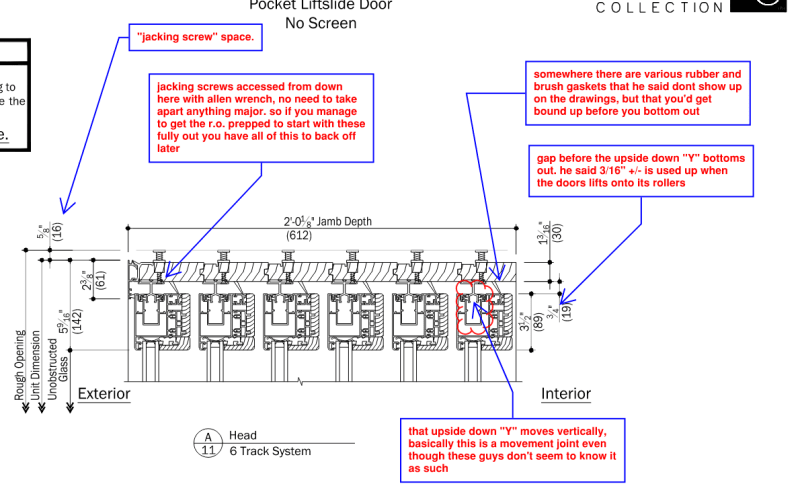This is going to be sloppy post. I'd not bother but I really do feel that I may have some insight to offer and I don't have time to clean it up. The quote below is taken from an email that a friend sent to me after
finally managing to speak with a sympathetic manufacturer's rep who knew his stuff.
In many cases, I feel that the practical answer is to be very aggressive, both in terms of the loads used to calculate the deflections and the amount of deflection that is permissible. The clip below covers the permissible deflection well. In a place like California, where you probably have no meaningful snow to deal with, what
really are your loads? Consider that:
1) It's quite reasonable to ask for the sliding door to be installed after most of the instantaneous dead load is in place.
2) Your 20 PSF roof live load probably represents a construction case. What are the odds that load is applied over the full tributary area or that anyone really needs to open the door while construction is underway?
3) Downward wind forces, if you even bother to consider them, probably represent another point in time where sliding door performance is not critical. Is it really a problem if your sliding door sticks once every 10 years when the design wind storm is occurring? Perhaps, if you're trying to get inside for shelter. Or outside because the roof is coming down.
4) If there is a floor above, is it really going to see 40 PSF? Statistically, it's unlikely to even see 10 PSF I believe.
5) Realistically, plausible "failure" is probably just the breaking of the glass and getting sued over that. Per the quote below, it may take a fair bit of movement to generate that outcome.
6) From what I've seen of other people's designs, a lot of folks must be taking a fairly liberal approach. Short of incompetence / ignorance, there's just not no other way the stuff that's out there works.
KootK Friend said:
For these particular doors I'll have on PR they state 1/8" max deflection. When I went through what this joint actually looks like it turns out that it's a 5/8" flexible joint, 3/16" of which is taken up by the door lifting on its rollers so in reality there is 7/16" theoretically before you bottom out. He confirmed that this is correct but said that due to the brush and rubber gaskets you'd get a lot of resistance before then, so he said maybe 3/16" to 1/4" movement in reality before you have problems operating it but you'd still be safe from it exploding on you. During the install there are jack screws which are 1/2" at their max (and they do offer 5/8" versions).
If you can get the contractor to prep the r.o. such that the door installs with the 1/2" already maxed out it means that in the future they can be backed off up to 1/2" without removing anything (they are accessible behind some caps in the head track and turned with an allen wrench). So in a best case scenario - you've got about an initial 1/4" to play with (vs their stated 1/8"), at which time you could tune the door another 1/2" if needed. So up to about 3/4" before you've used up your 1/2" shim screws + wiggle room and start binding again. He said that if you hit that point they then have to pull the head and dig our material etc. to reset. So long story short it seems like if some future tuning is accounted for it's not so terrible.


